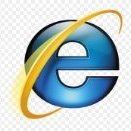Search the Community
Showing results for tags 'intel'.
-
I have a 2018 version Mac Mini with an Intel chipset. Would it be possible to install Windows without any sort of boot loader program like bootcamp? I would like to turn it into a media server for my network.
-
VIA is now focusing on x86 processors and the integrated motherboard market, rather than chipsets for third-party CPUs Previously one of the best chipset makers for enthusiasts looking for high performance on a budget, VIA has said that it now sees no future in making chipsets for third parties such as Intel and AMD. VIA’s vice president of corporate marketing in Taiwan, Richard Brown, explained that: ‘One of the main reasons we originally moved into the x86 processor business was because we believed that ultimately the third party chipset market would disappear, and we would need to have the capability to provide a complete platform.’ ‘That has indeed come to pass,’ said Brown. He also added that ‘Intel provides the vast majority of chipsets for its processors and, following its purchase of ATI, AMD is also moving very quickly in the same direction.’ Rumours about VIA quitting the chipset business started to surface towards the end of last year, when DigiTimes alleged that the former president and general manager of VIA’s platform business, Chewei Lin, planned to resign and take 40 VIA chipset technicians over to ASMedia, a subsidiary of Asustek. VIA’s previously had a rocky relationship with Intel over its third-party chipsets. Back in 2001, VIA released the Apollo P4X266 chipset, which brought DDR memory support to the Pentium 4, despite not having a license from Intel. To avoid the wrath of Intel, motherboard makers produced boards based on the chipset using VIA’s name rather than their own brands. Brown commenting on VIA’s relationship with Intel saying it hadn't recovered since then, and he replied: ‘The only way I can answer that is to say that VIA and Intel are direct competitors in a very tough market. Having said that, we do have a great deal of respect for Intel not just as a competitor but also for the huge contribution they have made in driving the development of the PC industry.‘ Has VIA made the right decision, or is there still a place for third-party chipset manufacturers in the business? What's more, where does this leave other chipset makers such as SiS?.
-
It appears that Intel has set the brand-name under which it will market its processors based on the upcoming Nehalem micro-architecture. The new desktop parts will be known as Core i7 and should be introduced by Intel on Monday – although they won’t be available until the official launch in the last quarter of this year. Core i7 processors will be made using 45nm process technology and will have from 2 to 8 cores, triple-channel DDR3 memory controller with up to 1333MHz clock-speeds, and support for multi-threading technology. Three models will supposedly be available en-masse starting at the end of this year, including a 3.2GHz Extreme processor for high-end gaming desktops. The significance of the i7 moniker remains unknown at this time but hopefully we’ll find out early next week.
-
Far Cry 2 has made some interesting appearances over the past few months, with a few teasers showing off the new Dunia engine built for the game in addition to a bit of actual gameplay footage. The game does look impressive, but what many fans are probably wondering is exactly what the system requirements would be to run the upcoming title. Fortunately Ubisoft has come out with an answer today, in both minimum and recommended varieties, and it looks like those who have been playing modern games on their two or three years old rig should at least be able to cope with the open-world shooter. This is certainly welcome news but if you are hoping to run this game smoothly with all the eye candy turned, then you’ll at least need a dual core processor, midrange GeForce 8-series graphics card (or even an ATI X1900) plus 2 gigs of RAM. Minimum requirements CPU: Pentium 4 3.2 Ghz, Pentium D 2.66 Ghz, AMD Athlon 64 3500+ or better RAM: 1 GB Video card: NVidia 6800 or ATI X1650 or better Shader Model 3 required 256 Mb of graphic memory Media reader: DVD-ROM Hard drive space: ~12 Gig or HD space. (tbd) Recommended CPU: Intel core 2 Duo Family, AMD 64 X2 5200+, AMD Phenom or better RAM: 2 GB Video card: NVidia 8600 GTS or better, ATI X1900 or better 512 Mb of graphic memory Sound: 5.1 sound card recommended Supported Video cards: NVidia 6800, NVidia 7000 series, 8000 series, 9000 series, 200 series. 8800M and 8700M supported for laptops. ATI X1650 – 1950 series , HD2000 series , HD3000 series , HD4000 series .
-
Transmeta said Thursday that the company had licensed its LongRun technology to Nvidia, providing the graphics chip maker access to low-power technology. Nvidia will pay Transmeta $25M for a non-exclusive license to the technology, which includes both the LongRun and LongRun2 technologies. Since bowing out of the chipset market in 2005 - a process it completed in 2007 - Transmeta has since focused almost exclusively on licensing its existing low-power technologies to other chip firms. In 2007, AMD invested $7.5M in the company. Later that year, Intel agreed to pay a one-time fee of $150M and $20M per year for five years to settle a patent suit. "We are very pleased to have achieved this license agreement with Nvidia," said Les Crudele, president and chief executive of Transmeta, in a statement. "We believe that this agreement both illustrates the value of Transmeta's intellectual property and technologies to our industry and realizes for Transmeta stockholders an immediate return from the strategic licensure of our intellectual property rights." Low-power technologies could be used in a variety of ways, both to improve Nvidia's mobile chipsets and graphics chips, as well as its handheld offerings and MIDs.Perhaps more importantly, the technology might be used as a counter for the thermal issues Nvidia recently experienced. Transmeta Licenses Low-Power Tech to Nvidia - News and Analysis by PC Magazine


